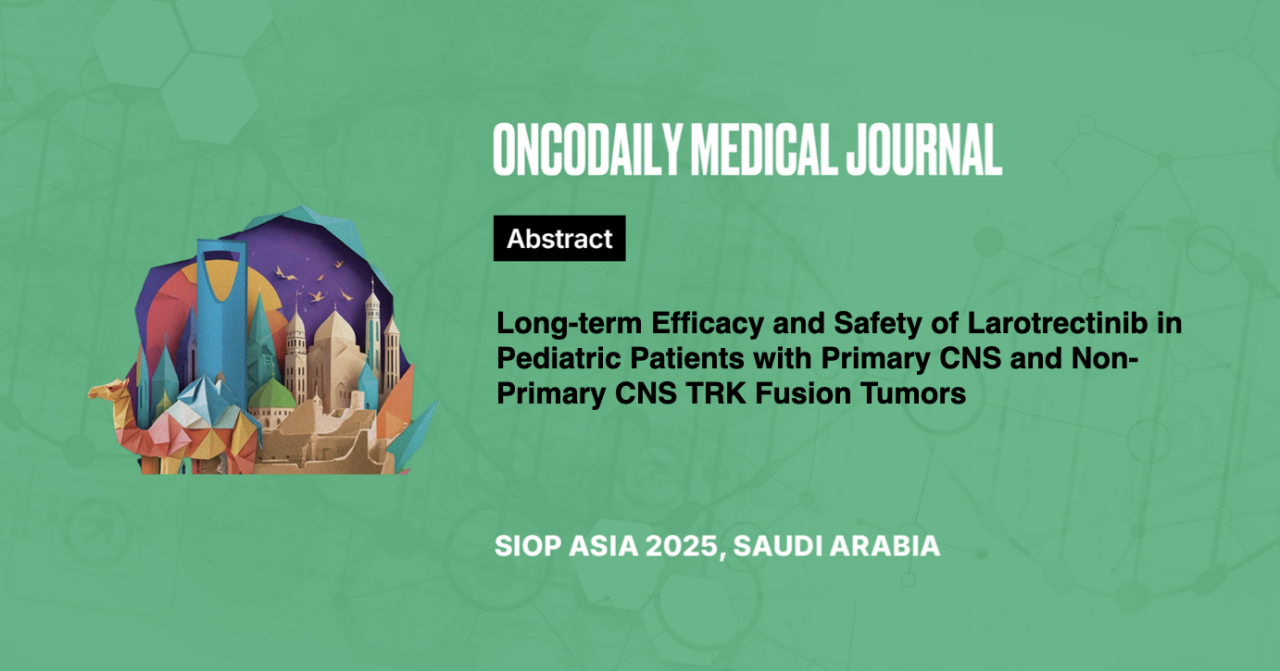Long-term Efficacy and Safety of Larotrectinib in Pediatric Patients with Primary CNS and Non-Primary CNS TRK Fusion Tumors
Abstract
Introduction: Larotrectinib is a first-in-class, highly selective TRK inhibitor approved for tumor-agnostic treatment of patients with TRK fusion cancer. We report data on larotrectinib-treated pediatric patients with TRK fusion cancer.
Methodology: Patients aged <18 years with TRK fusion cancer enrolled in 2 larotrectinib clinical trials were included. Treatment responses were independent review committee (IRC)-assessed (RECIST v1.1 and RANO). Data cutoff: July 2023.
Results: There were 137 patients, including 38 patients with primary CNS tumors (47% high-grade glioma, 32% low-grade glioma, and 21% other) and 99 patients with non-primary CNS tumors (49% infantile fibrosarcoma, 41% soft tissue sarcoma, and 9% other). All patients were eligible for IRC efficacy analyses. ORR for patients with primary CNS tumors was 37% (95% CI 22–54): 3 CR, 11 PR, 17 SD, 5 PD, and 2 not evaluable. Medians for DoR, PFS, and OS were 17 months (95% CI 6–not estimable [NE]), 20 months (95% CI 11–51), and not reached (95% CI 33–NE), respectively. The 4-year OS rate was 60% (95% CI 42–78).
ORR for patients with non-primary CNS tumors was 86% (95% CI 77–92): 51 CR, 34 PR, 9 SD, 3 PD, and 2 not evaluable. Medians for DoR, PFS, and OS were 43 months (95% CI 27–NE), 40 months (95% CI 28–NE), and not reached (95% CI NE–NE), respectively. The 4-year OS rate was 90% (95% CI 84–96). Median time to response was 2 months (range 1–9) for all patients. Treatment-related adverse events were mostly Grade 1/2.
Conclusion: Larotrectinib demonstrated rapid and durable responses with a manageable safety profile in pediatric patients with primary CNS and non-primary CNS TRK fusion solid tumors. This supports the wider adoption of next-generation sequencing panels that include NTRK gene fusions when testing pediatric patients with solid malignancies including primary CNS tumors.





